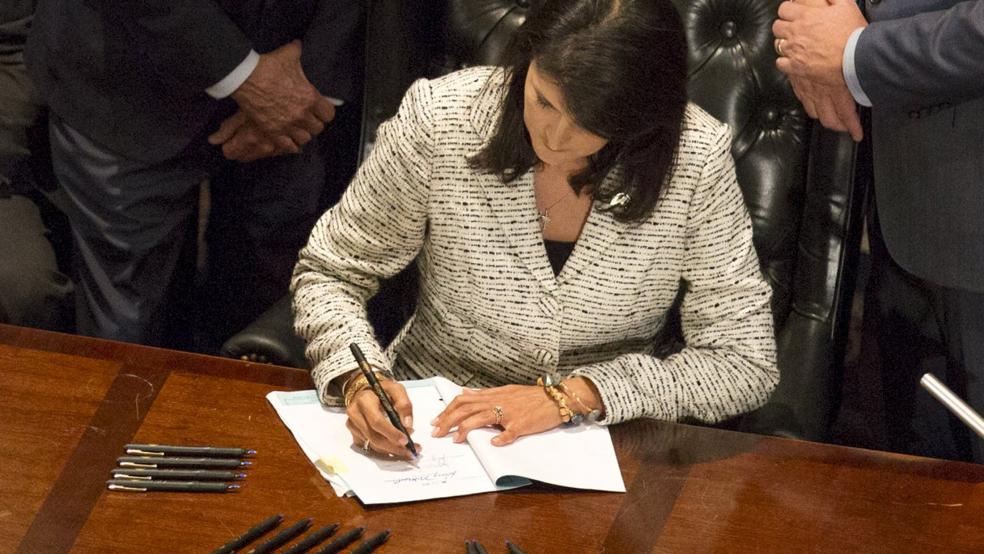COLUMBIA, S.C. (Reuters) - The Confederate battle flag removed from South Carolina's capitol on Friday has joined about 40 other historic banners housed at a museum honoring the state's military legacy, some of them surrendered by rebel forces at the end of the American Civil War.
A dozen of the flags at the South Carolina Confederate Relic Room and Military Museum in the state capital, Columbia, date back to the defeat of the South's pro-slavery Confederacy in 1865 after four years of war.In 1905, four decades after the United States' deadliest conflict ended, President Theodore Roosevelt returned the banners to South Carolina.Some of the flags are torn by battle, stained and threadbare, said Joe Long, the museum's curator of education."There's smoke stains, there's bullet holes," Long said. "I'm not aware of any in our collection that's actually stained with blood, but they could be."While the flag removed from the State House in Friday's ceremony is not a 150-year-old artifact, Long described its move to the museum as "a gesture of chivalry" that has brought a measure of reconciliation to a state wrenched by last month's slayings of nine African-Americans at a Charleston church by a white gunman. The flag, a modern replica of the battle colors of the Army of Northern Virginia, commanded by Confederate General Robert E. Lee, waved atop South Carolina's capitol from 1961 to 2000. It was moved to the Confederate Soldier Monument near the capitol entrance as a compromise with those who wanted it removed from the grounds entirely due to its association with the pro-slavery South. Supporters see it as a symbol of Southern heritage.Gov. Nikki Haley signed legislation on Thursday authorizing its removal, capping weeks of emotional debate after the Charleston church massacre.The museum, which relocated from the state capitol in 1896, also holds flags and other relics of wars in which South Carolinians fought, from the 18th-century Revolutionary War to win independence from Britain to the Civil War, both World Wars and the most recent wars in Iraq and Afghanistan.These include uniforms, a rare Revolutionary War letter written by a British officer, and memorabilia of military units that fought in the Mexican-American war of 1846-1848 and an African-American regiment that fought in France in World War One.On Friday, the flag was placed unfolded in an acid-free cardboard box covered in layers of tissue paper.Under the law the state legislature passed this week to relocate the flag, the museum has six months to come up with a budget and an exhibit plan."It is under alarm and key in an appropriate environment in a collection storage area until we bring it out," said Allen Roberson, the museum's director.The capitol flag may find a place among original, historic Confederate flags framed in cases lining the museum's display rooms.Those include the "Stars and Bars," the first national Confederate flag flown in South Carolina, with a different design from the battle flag's, as well as regimental infantry flags and individual rifle company flags.Long pointed to a flag carried in succession by five teenage standard bearers who were all wounded in battle, one after another. A bright silk U.S. flag from about 1861 in the museum was carried by a South Carolina regiment of freed slaves who joined Union forces. Some 4,000 South Carolina freed men joined Union military units during the Civil War, Long said. (Editing by David Adams, Frank McGurty and Jonathan Oatis)South Carolina capitol's Confederate flag joins revered museum collection

JASON MICZEK



